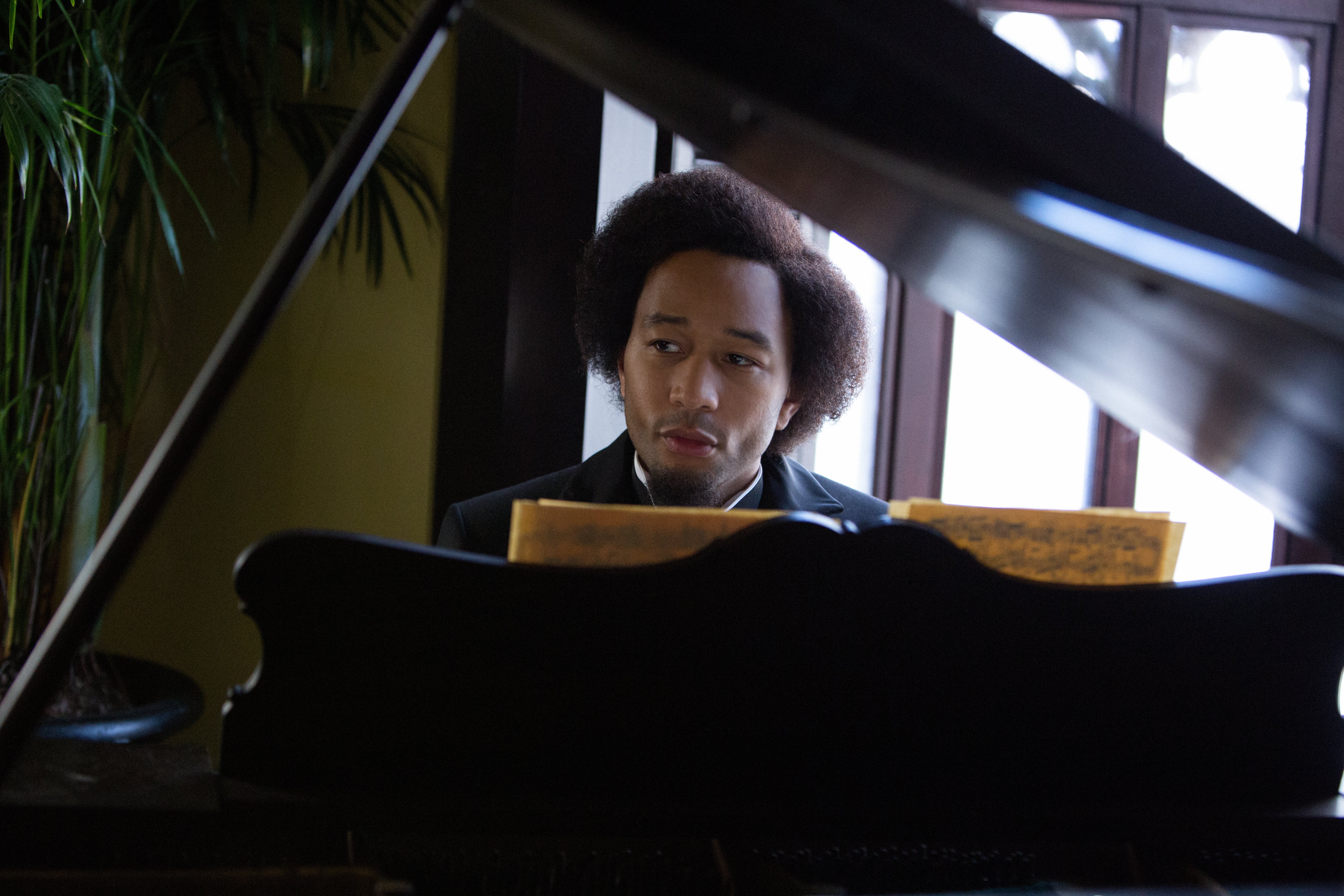
The fifth episode of the second season of Underground, “Whiteface” opens on a startling note. A room full of affluent white people have come to see a minstrel show, but instead, something else is amiss. Rather than being painted in blackface, the performers are covered in whiteface. They begin making fun of white people much to the horror of the audience. As the crowd rushes out, we soon realize that Cato or C. Powell as he’s calling himself these days is responsible for it all.
Though many of us might have been shocked at the site of whiteface, Underground’s writers and creators did not pull that out of thin air. Whiteface became fairly popular during the 19th century. Initially, it was one of the many ways the Irish were mocked, and moving forward it was seen in the 20th century when actor Canada Lee, an incredibly talented performer in the 1940’s donned whiteface for his role in the Duchess of Malfi. He used whiteface because his role was originally slated for a white actor. Needless to say, critics were none-to-pleased. More recently, whiteface has been seen in films like The Wayans’ Brothers White Chicks, Chappelle’s Show, and even in rapper Chamillionaire’s music video, “Hip Hop Police.”
Now a member of the Black elite in Philadelphia, Cato has used his money to assert his influence. Typically during the 19th century in Philadelphia, members of the Black elite were native Philadelphians, West-Indians, or fair complexion, freeborn Southerners. Much of the wealth in the Black community during the time period stemmed from caterers. For example, entrepreneur Robert Bogle was the first of many African-American caterers who served nineteenth-century Philadelphia’s white elite, and he became extremely wealthy as a result.
Subscribe to our daily newsletter for the latest in hair, beauty, style and celebrity news.
As we see from Cato’s extravagant party in “Whiteface,” the Black elite in Philly had close ties with the abolitionist movement. Philadelphia specifically welcomed newcomers with open arms, which is why Cato was able to carve out a place for himself without much upheaval. However, as we learn in this episode, being a Black person whether free or enslaved during this period meant that your status could change in the blink of an eye. Cato learns this the hard way when slave catchers Patty Cannon and August Pullman come knocking and snatch everything that he has built for himself from under him.
During this episode, we finally meet Frederick Douglass (John Legend) who was known to make his rounds, visiting abolitionist and sympathizers to the cause during this time. The same year Douglass visits Cato’s home in Philadelphia, John Brown visits Douglass’ home Rochester, New York where the two argue over Brown’s planned slave revolt and raid on Harper’s Ferry. In contrast, when Brown meets with Harriet Tubman that same year, she helps him recruit for the attack. Though Underground has not yet addressed it, Harriet Tubman and Frederick Douglass did not always see eye-to-eye.
Although they led very different lives, Harriet Tubman and Frederick Douglass’ paths often ran parallel to one another. As a conductor on the Underground Railroad, Tubman often worked in secret while Douglass’ work can be more easily traced. And yet, they were both friends with abolitionist William Lloyd Garrison and abolitionist and women’s rights leader Lucretia Mott. Also, Tubman once used Douglass’ Rochester home as a station for 13 runway slaves, she’d helped to freedom before getting them on board a ship to Canada.
Though Cato was not the only character at the center of this episode of Underground, his storyline was the most riveting this week. Still, everyone’s lives are on the verge of explosion. Georgia’s secret has been revealed. She’s been passing as a white woman, and the sheriff’s department has figured it out. People of color passing as white has long since been a part of our culture. Both 1934 and 1959’s Imitation of Life films are perhaps the most long-standing images of passing in popular culture. In the films, Peola and Sarah Jane, the young women who attempt to pass are destroyed in the end by their actions. Likewise, Georgia assures both Elizabeth and the audience that her decision to pass is not taking the easy way out.
Elizabeth is still teetering the line between peaceful protest and violence, and it looks like she’s ready to dive headfirst into violence. Seduced by the defiance of John Brown’s men, she’s ready to ride and die for the cause, and she nearly does this episode. It’s clear that Elizabeth will not be silenced moving forward.
In the meantime, Rosalee and Noah have finally been reunited. However, their reunion is bittersweet. Instead of telling Noah that she’s pregnant, Rosalee convinces him to accompany her on her journey down South to try and retrieve her mother, Ernestine, and brother, James. Elizabeth is horrified that Rosalee would put her unborn child in any danger, but Rosalee is determined. As the newly engaged couple head back to Georgia, we know disaster is probably on the horizon.
Meanwhile, in South Carolina, Ms. Ernestine has let go of her addiction to the devil’s blood and Hicks, and she seems back to her old determined self. (At least for the time being.) She’s forged a relationship with Clara, who is looking to grasp some power of her own by bedding the young master of the Roe plantation. She turns to Ernestine for guidance. I’m not sure how any good can come of this, but Stine seems to think that Clara’s bond with the young master is her way off of the rice plantation.
Things are certainly brewing on Underground. As winter draws near, we know that something big is just around the corner.
Underground airs Wednesdays at 10 PM ET on WGN America.
